Back when I started collecting airline miles and hotel points, I didn’t spend too much time worrying about their exact value, as I’d mentally committed to never using them for less than 2c per point in value. Since 2% cash back was the best alternative at the time, that made sense as the barometer against which to compare, and I intended to use my miles and points for premium cabin international airfare and swanky hotels, where I knew I could count on getting a lot of value. But I’ve found myself reconsidering that metric.
Of course, valuing your miles and points can be tough. Some will redeem 100,000 points for a flight with a retail price of $8,000 and claim to have gotten 8 cents per point in value. While I guess that feels true on some level, it doesn’t seem like a reasonable method for figuring your redemption value to me because I never would have spent $8,000 on a flight in the first place.
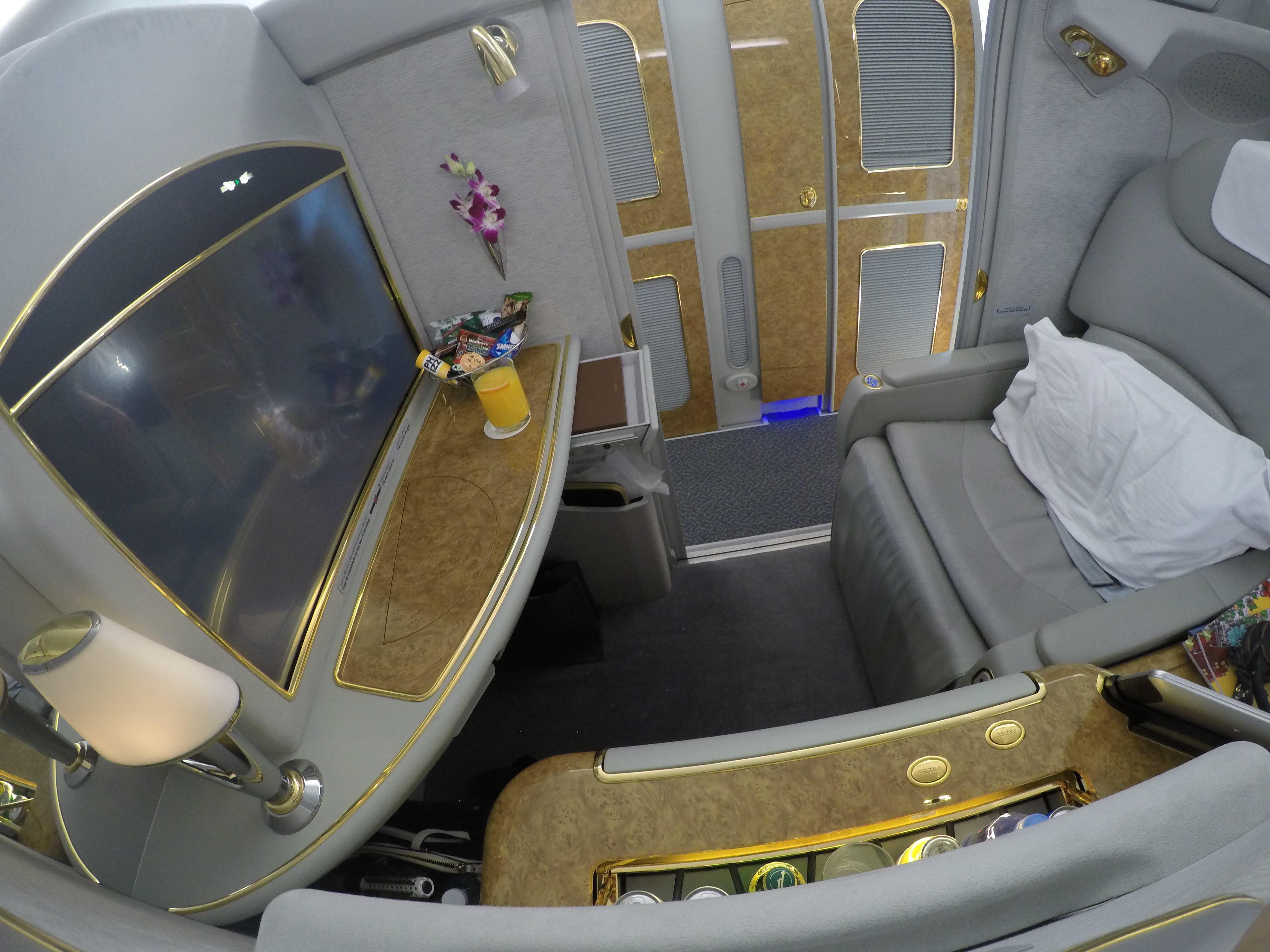
Some would say that you can only calculate your cents-per-point value based on the cash price you would otherwise be willing to pay. I understand and appreciate that argument, but I don’t totally buy into that one, either. With the plethora of airfare sales to Europe from the East Coast these days, the most I’m willing to pay for a cash ticket to Europe is about $400 round trip, and I’ve flown WOW and would fly Norwegian if I had to pay cash and they were the most economical options. That said, I’d much rather fly in Singapore Suites class. That experience — the comfort of the seat, the service, the food, the novel “fun” of flying in style beyond what I could/would pay in cash — is definitely worth more to me than $400, though I couldn’t justify spending much more than $400. Truth be told, before I knew about airline miles and hotel points, I probably had about a $500 cap in terms of the price I was willing to pay for any airline ticket as I’ve long been spoiled by competition out of New York making for frequent enough sales to be able to get to most regions at that price with patience and sale-stalking.
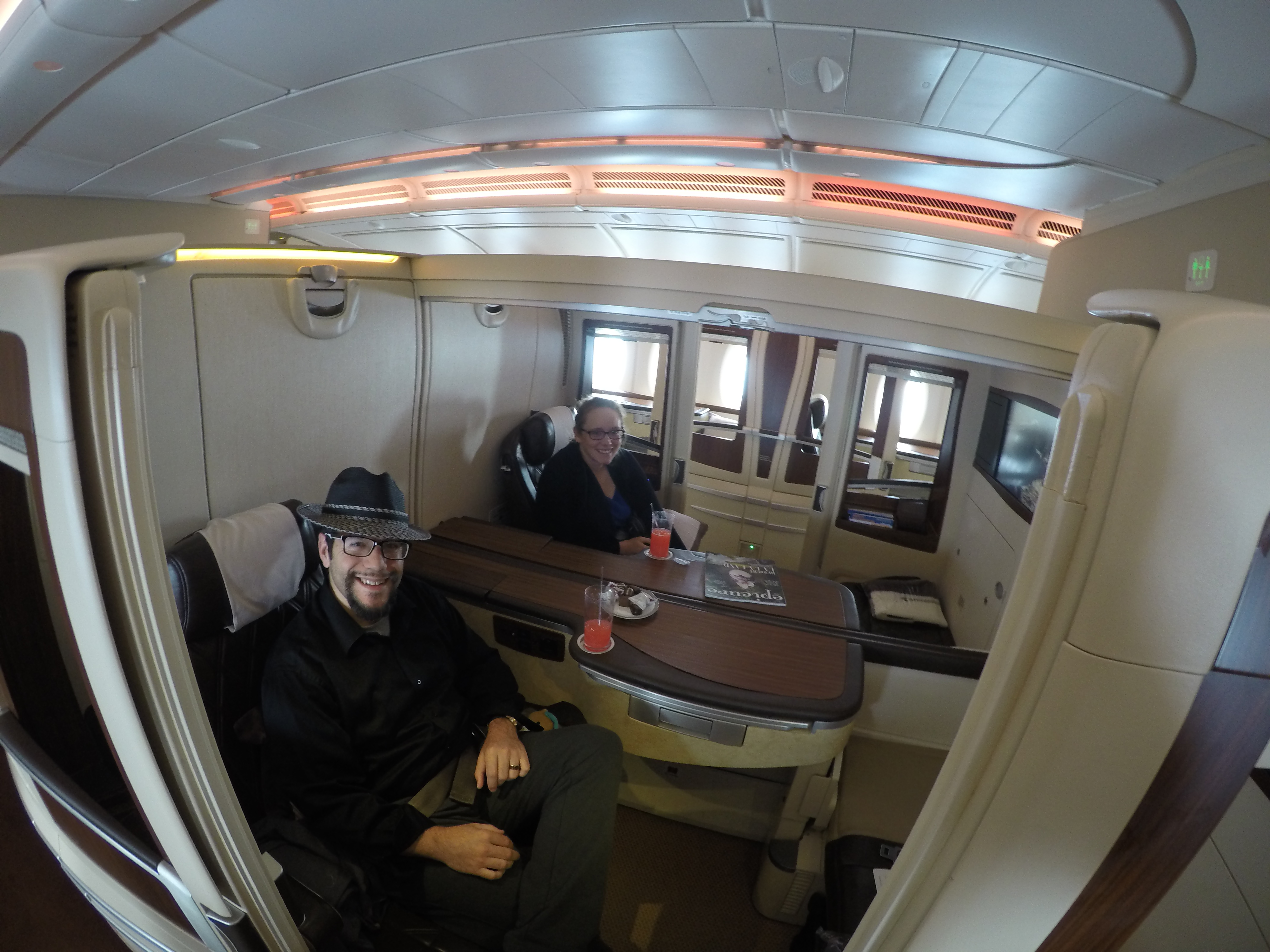
And so valuing my miles became kind of tough — though truth be told I’ve never redeemed miles to fly business class to Europe as a final destination as I haven’t been able to justify the number of miles in comparison to the cheap cost of cash tickets. It’s easier for me to feel comfortable with redemptions to other parts of the world, where it is less common to find tickets so cheaply – though I have often kept that “2c” valuation in mind.
And that brings me to a current dilemma. It looks like I will be taking an unplanned trip to Asia in a few weeks and I need to determine how to get there and back. Economy class flights are around $1,000+. I’d be booking for two and there is no way I’d spend two grand plus. Thankfully, I have plenty of miles and transferrable currencies that I figured it would be no problem to use my miles and points. I can further admit that I’d rather use miles to fly in business class when traveling so far as Asia. While I spent years traveling to dozens of countries in economy class on my own dime before the luxury of miles and points, those currencies have spoiled me with a more comfortable experience that is hard to pass up on long journeys, especially since I’ve put the time and effort into earning the miles.
My balances in terms of airline miles and transferrable currencies make it possible to do the trip with any of the major alliances, but availability isn’t great. Here is a chart with the immediately obvious options:
| Airline | Region | Business Class | First Class |
| American | Asia 2 | 80K | 110K |
| United | North Asia | 80K | 120K |
| Aeroplan | Asia 1 | 75K | 105K |
| Alaska | Asia (varies) | 50K Cathay 50K Hainan 65K Japan Airlines 105K Korean (RT only) |
70K Cathay — Hainan 75K Japan Airlines — Korean |
| ANA | Asia | 85K RT on ANA 95K RT on Star Alliance |
This is by no means a complete list; veterans will note that I have excluded some key programs. First, I excluded carriers with distance-based award charts like British Airways both because the connections required and availability made it undesirable. I left out programs that are only transfer partners with SPG because I would rather hold my SPG points for the shot at an off the charts property come August 1st.
However, those prices obviously only represent half the story: there also has to be availability. Cathay Pacific has no availability in business or first class and my dates are pretty tight (I have at most 2 possible departure days and 2 possible return days).
Ultimately, I need to get to Shanghai, but if I can get to Hong Kong or Beijing or generally within a few hours of Shanghai, I know I can probably get an economy class ticket / train / etc, to complete the journey – so I have some flexibility in searching for awards in terms of destinations, but not much in terms of dates.
Alaska
At first glance at the list above, Alaska and ANA stand out – let’s start with Alaska.
Unfortunately, as noted above, Cathay has no availability. Neither does Korean have availability. Hainan does, though surcharges are higher than I’d like ($250+ per person). That eliminates the options for around 50K in business class.
On the way to Asia, Japan Airlines only has economy class availability, which leaves me with oneworld or Star Alliance options to get to China as I haven’t seen anything from SkyTeam.
However, JAL does have availability on the way home. In fact, they even have first class availability from Tokyo to New York that would work, so that is an attractive option for 75K Alaska miles. I’ve only ever flown Japan Airlines regional business class on a 787, so I’d be interested in the Tokyo to New York route. What’s more, while I don’t have much time flexibility, I could probably squeeze in a day in Japan since Alaska allows a stopover on a one-way award.
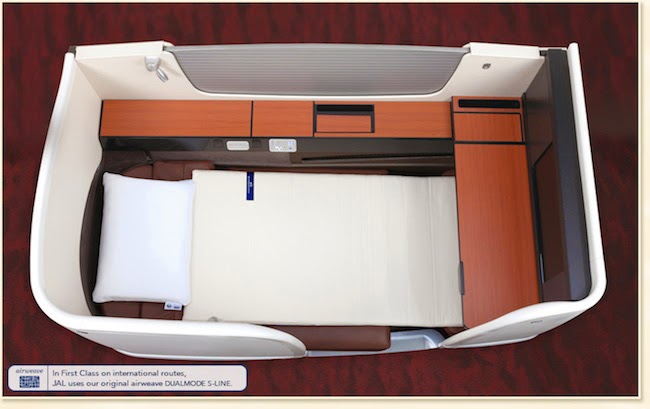
For argument’s sake, let’s say I flew out to China using United miles (80K) and back in JAL First Class with Alaska miles (75K). While miles certainly aren’t all equal, my total cost in terms of miles would be 155K miles per person.
ANA

ANA certainly looks like a much better alternative. At just 85K miles round trip on its own metal or 95K round trip on Star Alliance members, it would keep more miles in our pockets. As ANA is an Amex Transfer Partner, we have plenty of points to transfer.
ANA has no availability currently on its own flights, though United.com shows some Star Alliance availability on Austrian, Lufthansa, Swiss, and Air China as well as on a mix of United (including the new Polaris on a 777-300ER to Tokyo with ANA to Shanghai). ANA adds fuel surcharges on Austrian and Lufthansa, but they do not on Swiss, Air China, or United.
Initially, I was a little disappointed with the prospect of using ANA miles as I’d really kind of like to fly home in Japan Airlines first class, but it would be hard to justify burning an extra 50K miles/points per person rather than flying a perfectly good business class trip on one of these Star Alliance options.
However, ANA’s site is unfortunately only showing options in United Polaris business class. Thankfully, it is on the new 777-300ER, which certainly looks comfortable enough to me — though not as exciting as a more glamorous foreign carrier. I’m not sure if ANA isn’t showing the other options because they represent phantom space or if there is another reason for the glitch – I’ll have to look into it further as plans firm up.
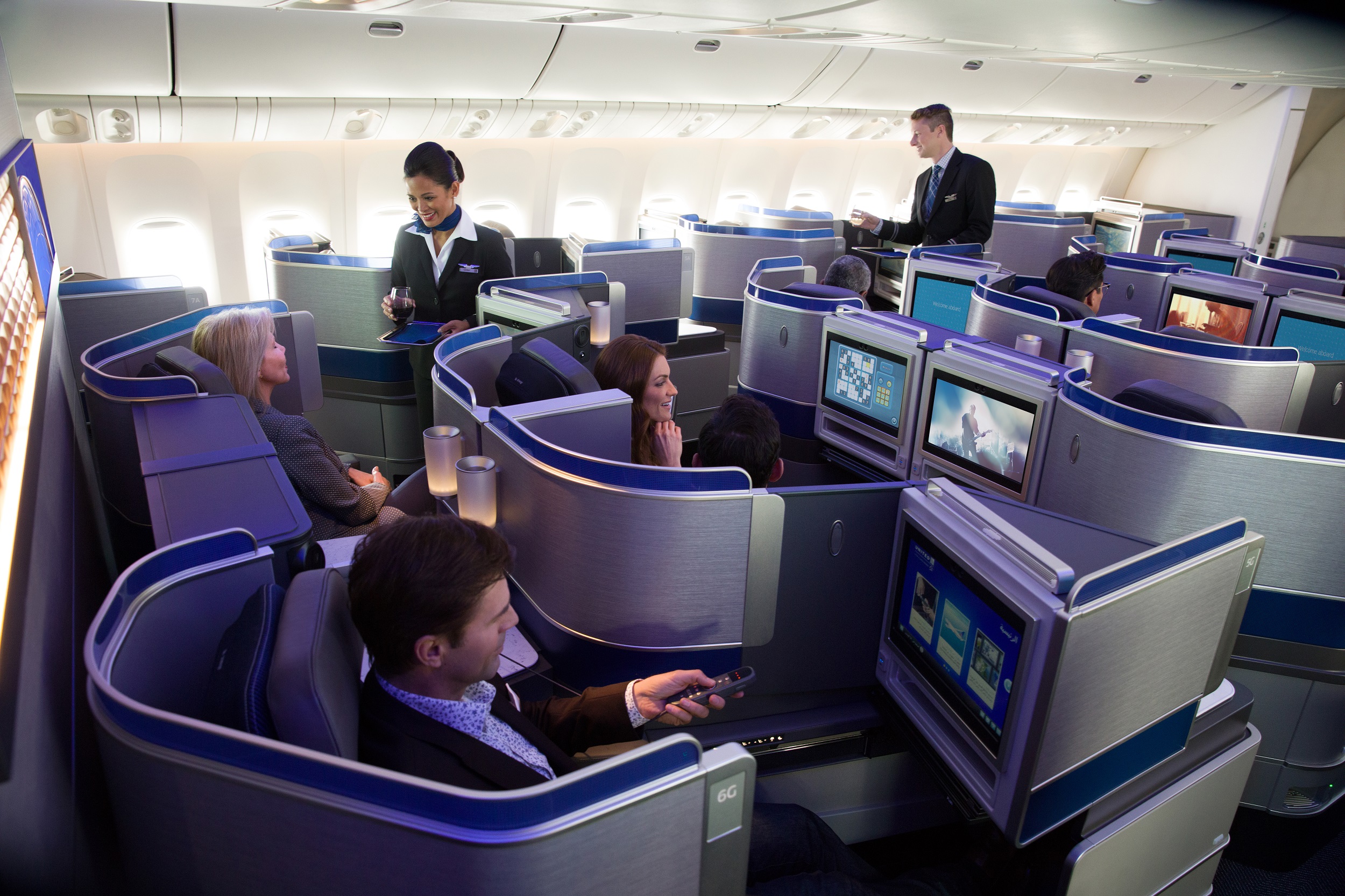
Still, overall, paying 95K Membership Rewards points for round trip travel to Asia sure isn’t bad. Flying United takes some of the “fun” out of flying international business class, but it would get the job done.
American / oneworld
Less attractive but not outrageous in terms of pricing is using American airlines for AA flights or oneworld partners. American shows some “mixed cabin” space on its own flights…all of which includes economy class across the Pacific. Thanks to American’s award routing rules, I can only connect within Asia 1 / Asia 2, meaning that my only partner options are Cathay Pacific and Japan Airlines.
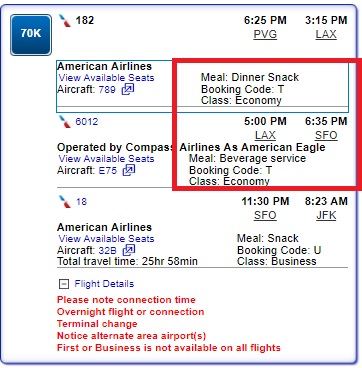
However, another option has been tempting me. Qatar Airways does have some availability, either on the way to Shanghai from Atlanta to Doha to Shanghai or on the way home including Doha to New York in the new Q Suites business class. I’ve flown Qatar once before and the business class lounge in Doha is pretty amazing. However, since American will not allow transit via a third region, I would have to pay for two separate award tickets — one from North America to Doha and a second from Doha to Shanghai (or vice versa) — if I wanted to go this route. That would cost me a total of 110K miles one-way in business class. This is by far the most expensive option and I would only consider it in one direction or the other. It certainly appeals to me from the standpoint of enjoying a journey I’d otherwise never pay for, though it’s hard to justify the price tag….especially when I consider the final option…
I could just use points at 1.5c to buy a ticket
But then another option dawned on me. I used some of the techniques Greg outlined in How to find great business class fares with Google flights and I found that business class tickets have been on sale from Boston to Beijing — from just over $2200 round trip. From there, I could easily get to Shanghai.
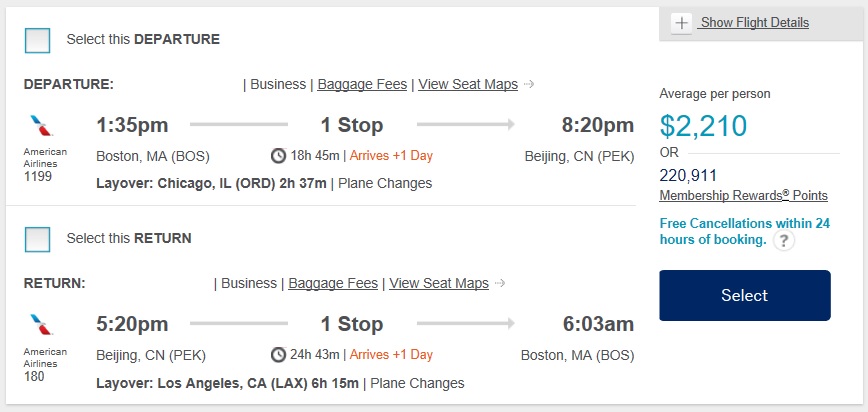
In fact, early in the day yesterday, both American and United were showing the same price on this route (though today only American still has seats at this price). If I could book a $2,210 flight via the Ultimate Rewards portal at 1.5 cents per point, that’s about 147,000 points round trip. That’s not as good as ANA, though it’s better than my other options — and the ticket earns miles. In fact, the international segments on American Airlines would earn at least 150% mileage flown if credited to Alaska. As an MVP member, I’d actually earn 200% — which would come out to about 27,000 redeemable miles earned on some of the itineraries I considered.
I’d pay even fewer Membership Rewards points. Thanks to holding a Business Platinum card, I get a 35% rebate when using Membership Rewards points to pay for flights through Amex Travel. A flight that costs $2,210 would be 221,000 Membership Rewards points initially, but I’d get 35% of the points back for a net cost of 143,650 Membership Rewards points — a few thousand less than Chase. Again, if I flew on American Airlines, I’d earn about 27K Alaska miles — for a “net” mileage cost of about 116,650 miles (again, recognizing that Membership Rewards and Alaska miles are not necessarily equal). That’s a net 21K more than ANA would charge me for flying United. Is American worth 10.5K more each way than United?
Of course, I run into the same issue I had with ANA in that it takes some of the “fun” factor out of redeeming miles to fly in a business class that doesn’t have as many bells and whistles as some of the foreign carriers, though it does give me some freedom to choose an itinerary that fits my needs rather than being limited to award availability.
But then I’m redeeming for less than 2 cents per point…sort of
Of course, the problem with this plan is that it “feels” like I’m redeeming for less than 2 cents per point, which was my original barometer. I say “feels” like because, while I’m obviously only getting around 1.5 cents per point towards airfare, I would be earning miles that have some value. If we value Alaska miles at 1.4 cents each (as found in our Reasonable Redemption Values), that’s about $378 in value (though it could certainly be more). If we account for the value of the miles earned, my “cent per point” value creeps closer to 2 cents each.
But the more I earn miles and points, the less I feel tied to redeeming them at 2 cents each. Most of my points were earned at better than 1x as most of them came from signup bonuses / bonus categories / referrals / promotions / etc. When I consider the source of my points, I’m still beating out a 2% cash back card. But it’s a slippery slope when we start justifying redemptions that way.
Ultimately, I’ve found myself able to accept 1.5 cents per point in value more than I would have expected before the launch of the Sapphire Reserve, and that is in no small part due to the availability of great business class fares that create situations like this, where a “paid” ticket would cost me fewer points than the airline miles necessary for an award.
But this of course creates a new dilemma: if I book with airline miles instead, am I not accepting even less than 1.5 cents per point in value? Of the options above, only ANA gives me better value than booking with points through Amex or Chase. Sure, I can book a “better” business class (or even first class) with Alaska/United/American miles, but if I use Chase and Amex as an alternative, it starts to make my airline miles feel much less valuable….which makes me question my 2 cent metric altogether as being unrealistic in today’s highly competitive airfare environment.
What would you ultimately do?
Would you redeem miles to fly a more “fun” route, like something including Japan Airlines First Class and Qatar Airways Q Suites? Would you go the low mileage route with ANA? Or would you redeem points through Chase or Amex to buy a cash ticket and earn miles? I’ll be making a decision in the coming days, but I’m curious about reader input.





[…] day, I wrote about my dilemma in choosing how to book an upcoming unplanned trip to Asia (See: A miles vs points dilemma: Redeem an award or “pay” with points?). In a nutshell, I was looking at using airline miles vs booking a paid fare using the Chase […]
I also add the calculation of which program is most likely to devalue in the near term. For that reason transferable points and those that can be used to purchase tickets are used as a last choice. When the economy downturns, and airlines are offering triple miles on routes etc to drum up business I’ll have those points ready to use to purchase tickets.
So here’s how I determine the value of a biz class fare when I book a reward redemption: I first figure out the cash price of the Y ticket and I then imagine myself in the check in line with a dialog box popping up offering a paid upgrade. So for example, I am flying AUS-PRG this week. When I bought the Y ticket it was $1,200 (and these flights have never really dropped below this while tracking for months). I’d buy the upgrade at $500 each way so the ticket value is $2,200. Because it is on AA I’d be forgoing 7x$ on the initial purchase, which I would back out of the gross cost for net cost using your reasonable values.
Net value for the ticket using this approach is $2,056 and net miles price after Barclay rebate would be 105,000 miles for a cpm return of .02.
[…] points. Consider Nick’s situation to get an idea of why flexibility can lead to angst: A miles vs points dilemma: Redeem an award or “pay” with points? When there are many good uses for points, it can be emotionally more difficult to part with those […]
no we wouldnt spend $8000 on the flight in the first place, but does it really matter? We all value our miles differently so no sense debating what they are finitely worth. Mathematically we are getting 8 cents per mile
These are my favorite types of posts – very reflective perspective on our hobby.
You have it right. This is the key:
But this of course creates a new dilemma: if I book with airline miles instead, am I not accepting even less than 1.5 cents per point in value? Of the options above, only ANA gives me better value than booking with points through Amex or Chase.
One factor that you have not mentioned is the “earning” rate on the specific card. For example, your CSR Points were probably Earned at a 3X rate. Compare this against a SPG or Amex card that earns 1X rate.
Premium travel cards from AMEX, Citi, & Chase all earn at (about) 3x – what do you think an appropriate valuation should be since this is the case?
I’m looking forward to hearing about your decision. My travel hacking journey may go the other way, I’ve been finding great fare sales and using the amex bus plat points to book them (in coach) – but have yet to transfer them to a rewards program. For me, this was easier to understand and a better way to know I’m stretching my points (and dollars). But then American had to go and upgrade me on a recent long flight…and now walking past those roomy seats will be harder on all subsequent flights.
I found out that in order to find as many award spaces as possible on ANA’s site, I have to go to MULTI-CITY tab and feed the itinerary flight by flight. Many times it shows the availability that I see on united.com. Try that and report back your findings.
Great tip! That does in fact bring up the flights I had in mind, though for some reason after I select all of them, it tells me that it isn’t available. I’ll have to do some mort investigation, but that looks like it might make a big difference. In fact, I even found a first class leg out of Frankfurt that I didn’t initially see on United….so thank you!
You are welcome, glad to have helped (some).
usually if NH website gives you an error after selecting flights, it’s because the routing is not permitted
Yes, that’s exactly what it was. ANA doesn’t allow you to route via Europe to go to Asia, which is why I wasn’t seeing the various European carriers in my original search and why it errored out when I went city-by-city. Thanks.
I would certainly take the ANA option of those offered, while keeping an eye out for better products than United given the low change cost, especially ANA itself which often releases business class space closer to departure and you may even get miles back if the dates are low or regular season (80K or 90K roundtrip). However, fuel surcharges are on the rise, and you are likely to take on an additional $200-$300 on non-United itineraries, which in my book is not worth it versus 5k or 15K miles.
Over the last few years, the lowering of economy and business class cash fares combined with the large increases in award prices have absolutely reduced the value of airline miles substantially. By my calculations, Delta/American/United miles when used for awards are worth well below 1c each, closer to 0.5c each, with the exception of Delta’s Pay with Miles option offering the 1c cash value for Delta cardholders (note no miles earned of that part of the payment). As you point out, even business class fares are low enough regularly that they can be purchased with fewer Amex or Chase points directly than by transferring to airlines.
For example, I purchased a US-Chile business class roundtrip on flatbed Aeromexico for 72K Chase points and earned 29K Delta miles. With Chase points worth 1c as cash, I paid $722 to save+earn 229K Delta miles, which makes those miles worth 0.3c each. If using the cheapest programs like Alaska or ANA, I would have saved+earned at least 100K miles and at least $100 in taxes/fees. Which equates to $722-$100 = $622 versus 100K miles, for a valuation of approx 0.6c per Alaska or ANA mile.
These business class sales come up regularly enough (kind of like award seats!) that I feel comfortable marking American, Delta and United around 0.5c in value, and Alaska or ANA around 0.7c in value. The 2c mile is long gone.
This is exactly the same reason I think TPG etc. mislead folks with >1.5 UR valuations. I rarely redeem for >2 cents of value (as much as I enjoy the program).
Oh man, I’ve been having the same internal dialog more often since I got the CSR. 1.5c redemptions are now part of my normal toolset. It’s definitely weird how the game is changing.
You have options to use miles in several programs… do you use one of them less than another? Can you foresee not using those miles for a long time? If that’s the case, it might be better to accept the lower per-mile value and use up part or all of a rarely-used balance than to achieve max value from points that are easier for you to use.
I don’t have any recommendations … as this is way beyond my own knowledge. I just want to say thank you for these kind of posts. As a somewhat newbie to the miles/points community, I really learn a lot from this type of a post. Really enjoy this blog!
I agree. Nick, your posts always helps me see this hobby in new alternative ways. Because I have not traveled nearly as much as you have, I place flying in business / first class very high. It is still a novelty for me and my wife. All of our travel goals and hoarding of points/miles go towards traveling in ways we could never afford. Maybe after our 5th trip to Europe or 3rd trip to Asia, we will begin to see it differently. But for now – it is always about the experience of traveling in ways beyond our means.